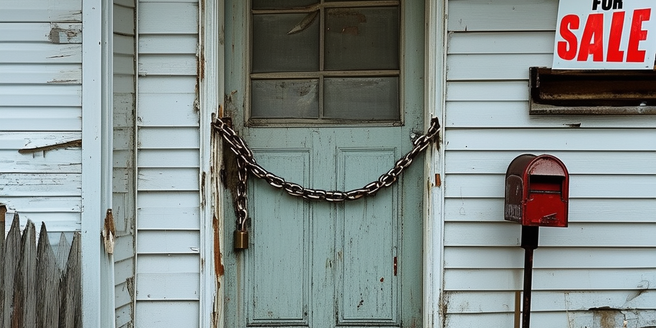Understanding the Relationship between Unemployment and Homeownership
Unemployment creates a complex situation when it comes to homeownership. As an unemployed individual likely struggles with income stability, their ability to maintain monthly mortgage payments may consequently falter. Even with government assistance programs, the financial stress can become overwhelming. Without a stable income, it becomes almost impractical to sustainably manage the mortgage. This financial instability is further exasperated if the individual has no savings to fall back on. The inability to cover these costs can lead to significant complications, namely the risk of foreclosure. This link between unemployment and homeownership shows just how crucial employment stability is to owning a home.
The Impact of Unemployment on Homeownership Rates
Unemployment significantly affects homeownership rates, with high unemployment periods leading to increased foreclosure rates as homeowners grapple with financial instability and difficulty meeting mortgage payments. This results in more foreclosures, demonstrating the crucial link between economic conditions, employment, and homeownership. Conversely, low unemployment signifies a stable financial environment which encourages homeownership as individuals have job security and consistent income. Hence, periods of low unemployment foster trust in the market and promote homeownership investment, underscoring the correlation between employment and homeownership. As such, unemployment status impacts both individual’s financial conditions and broader real estate trends.
How Unemployment Influences Mortgage Loans and Payments
Unemployment can significantly affect both the approval process of obtaining new mortgage loans and the ability to maintain regular repayments on an existing loan. Lenders need the assurance of a steady income to approve a loan and without it, they might view the borrower as a high credit risk. The absence of regular income also makes it harder to keep up with current mortgage payments, leading to potential penalties or increased interest rates that could jeopardize homeownership. Job loss, therefore, introduces a level of financial instability that can limit borrowing power and make fulfilling current obligations more difficult, emphasizing the important role a stable income plays in dealing with mortgage loans.
Strategies to Maintain Homeownership During Unemployment
Unemployment doesn’t have to lead to losing your home; strategies like loan modification, seeking forbearance, and leveraging unemployment mortgage assistance programs can help. Loan modification adjusts your home loan terms for easier payments, possibly by lowering the interest rate, extending the loan term, or both. Conversely, forbearance temporarily reduces or halts payments, offering relief until your finances improve.
Numerous regional unemployment mortgage assistance programs provide temporary aid for mortgage payments. Communicating with your mortgage lender about your situation is crucial, as they can guide you towards the most suitable options. Understanding your options and taking appropriate measures can maintain homeownership during these challenging times. Your resourcefulness and proactive behavior may be the key to preventing home loss due to unemployment.
Statistical Overview: Unemployment Rates vs Homeownership Rates
The correlation between home ownership and unemployment rates has been clearly demonstrated through various statistical studies, particularly during economic periods like the Great Recession. There was a distinct rise in unemployment rates across many nations, which corresponded with a decline in home ownership rates, revealing the link between these two variables and the housing market’s vulnerability to job market changes. As jobs became scarce and unemployment increased, fewer people could afford or maintain homes, leading to a significant drop in homeownership rates. This highlights the potential vulnerabilities the housing market has to job market volatility. When employment opportunities lessen and unemployment rises, people’s purchasing power decreases, negatively impacting the housing market. Therefore, the trend between homeownership and unemployment rates underscores the intricate ties between the labor and housing markets, and the need for proper job market management to ensure stability in the homeownership rate and the overall housing sector.
Policy Measures to Support Homeowners During Times of Unemployment
Governments have the ability to quickly enact policies that significantly aid homeowners in financial distress, especially during periods of economic hardship such as recessions or pandemics. Special measures like forbearance provisions, which allow homeowners to temporarily delay their mortgage payments, offer relief during these uncertain times. Loan modifications are another form of assistance, as they alter the mortgage terms, potentially lowering the interest rate, increasing the loan’s duration, or decreasing the principal balance, to make payments more manageable.
Government-supported unemployment programs, intended primarily to prevent foreclosures and their disastrous impact on the housing market, provide temporary financial help for homeowners who unexpectedly lose their job, covering part or all of their mortgage payments until they secure new employment. Not only do these policies aid struggling homeowners and contribute to the stability of the housing market, but they also support overall economic stability. Therefore, by assisting homeowners during financial difficulties, not just individuals but also the broader economy are protected.



